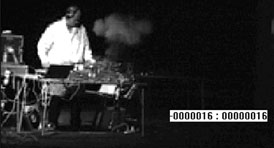Dedication
Introduction
Dan Ariely
Walter Bender
Steve Benton
Bruce Blumberg
V. Michael Bove, Jr.
Cynthia Breazeal
Ike Chuang
Chris Csikszentmihályi
Glorianna Davenport
Judith Donath
Neil Gershenfeld
Hiroshi Ishii
Joe Jacobson
Andy Lippman
Tod Machover
John Maeda
Scott Manalis
Marvin Minsky
William J. Mitchell
Seymour Papert
Joe Paradiso
Sandy Pentland
Rosalind Picard
Mitchel Resnick
Deb Roy
Chris Schmandt
Ted Selker
Barry Vercoe
Chris Csikszentmihályi
I like to make technologies that no one else in the world is making. I see these as both utopian and dystopian. They should work, but also signify. I think I've failed when my work is easily assimilated.

Challenging social power structures—especially when they have the potential to obliviously cause harm—is central to my work. Perhaps it's my age and certainly it's my field, but I see politics in a lot of places that others don't . . . .
When the word "scientist" was first spoken in 1833, it was meant as a joke: its coinage first drew laughs and later was attacked as "an American barbarous trisyllable." Until that point, science was an amateur endeavor, driven by interest in understanding the world. Similarly, machines were as likely to be designed by lay inventors or plant workers as by engineers. People who made technologies were often called "artists," meaning, essentially, makers of things.
Likewise, many of science's foundational devices—microscopes, telescopes, prisms—were used long before in "natural magic," a field that sought to demonstrate the wonders of the world to everyday people. Newton bought his prism at a corner magic shop, and complex mechanical characters were entertaining people 300 years before the word "robot" was invented (by a playwright). Put simply, technical imagination was everyone's province.
In the last 150 years, science and technology have become specialized, while the bulk of fabrication has become mass production. This has made our society technological to its very core, but it has also led to a rift between most people and the things they use all day. My own work has been an effort to cross this rift: to bring together artists, scientists, and engineers who hope to reconfigure technologies for the full range of human experience.
Trained as an artist, I learned programming, electronics, and machining simply because these are the tools used to create the fabric of today's world. After all, if fifteenth-century Italian painters used the most advanced technological systems for visualization, why should I settle for less? While artists' work may often be seen as "fringe," the flipside is that it is also often visionary.
Favorite childhood toy: anything anyone in my family made for me—like the pictures my father would draw on my school lunch bags.